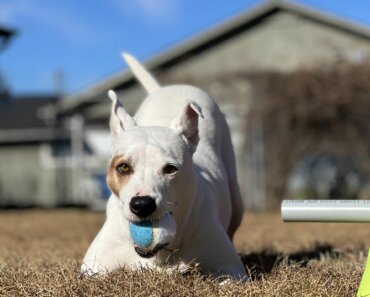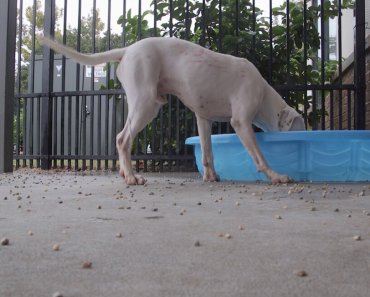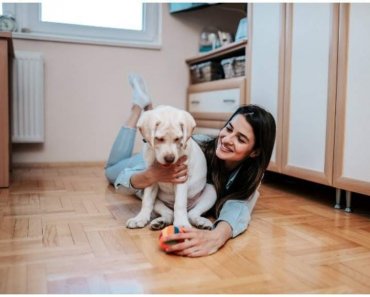Choosing a litter for your cat is more involved than it used to be. Gone are the days when clay was about the only option — now, you can find litters made from a wide range of materials, from wheat to wood. Here’s how to pick the right product for your cat.
Cats are notoriously picky, and it doesn’t stop at their food. They can also be very fussy about the kind of litter they prefer to use. Finding the right litter to suit your own kitty may mean some trial and error, but knowing something about the various litter types available today can help make the process easier.
A SHORT HISTORY OF CAT LITTER
Prior to the late 1940s, people used wood ashes for cat litter. But in 1947, Edward Lowe created an alternative using repurposed absorbent clay. The new clay litter was sold by a skeptical pet store owner for 65 cents for a five-pound bag. Lowe also hawked his invention from the trunk of his car, and demonstrated it at cat shows. At the time, he had no idea how popular clay litter would eventually become.
While clay clumping litters are still widely in use today, in part because they’re among the least expensive litter choices, they have their drawbacks, depending on the product. Some can be very dusty, which isn’t good for a kitty’s lungs (or the lungs of those who clean out the litterbox). As well, the particles tend to stick to the cat’s feet and get tracked around the house.
AN EXPLOSION OF LITTER MATERIALS
Nowadays, there are so many other cat litter materials to choose from that clay is no longer the go-to product. Pet store shelves are lined with a variety of plant-based litters made from wheat, grass, corn, walnut shells, pine pellets, soft wood, and paper. Other litters are made from silica sand, crystals or gel — and, believe it or not, even tofu (also referred to as soy). Many of these litters are made from recycled materials, a bonus for those who like to be eco-friendly.
Boxiecat, for example, offers a line of plant-based, sustainable clumping litters that feature natural fresh plant aromas. These lightweight dust-free litters feature AirTight™ technology that traps bacterial and ammonia odors. If you prefer clay, the company also has a selection of dust-free premium clay litters.
WHAT TO CONSIDER WHEN CHOOSING KITTY LITTER
Which litter you choose will depend largely on what your cat likes and will use, but it’s also important to consider the following factors as well:
- Does the litter have clumping capabilities? They make cleaning the litterbox easier.
- Does it control odor? Chlorophyll from plants helps control odor naturally. Avoid litters that include synthetic fragrances — cats have very sensitive noses and the litter will be useless if your kitty is put off by the scent. Nor will a scented litter reduce the need for regularly scooping and cleaning the box.
- Are dust levels low? Consider a low-dust litter if you or your cat have allergies or respiratory issues. Keep in mind that while many litters are marketed as dust-free, they may still release dust when you’re pouring it into the litterbox. If your cat sneezes while using it, it’s too dusty.
- How much does it track? Litters that don’t stick to your cat’s feet mean less clean-up for you.
- How much does it weigh? Some litters, especially clay, are heavy, so if you can’t carry a 40-pound bag look for another material that’s lighter.
- Is the litter flushable? Some products claim to be, but do your homework before buying, especially if you’re on a septic system.
TAKE IT SLOW WHEN SWITCHING LITTERS
When transitioning your kitty to a new litter, mix the old litter with the new (this works best if the textures are similar). Alternatively, you can offer a cafeteria-style selection — two or three different kinds of litter in different boxes for your cat choose from. The “end result” will help determine what your cat prefers.
LITTERS FOR DIFFERENT LIFE STAGES AND NEEDS
1. Kittens
Kittens learning to use the litter box have a tendency to step in the dampness, then ingest the litter when licking their paws. Depending on the type of litter, this may cause an intestinal blockage, so a paper-based non-clumping litter is recommended. This type of litter is commonly made of recycled paper products and is billed as being environmentally-friendly, absorbent, and good at odor and dust control, with less tracking.
2. Cats prone to UTIs
Silica gel litter is touted for its ability to determine the pH of the cat’s urine and changes color to indicate a problem. Look for products that are labeled “with health indicator” or “alert.”
3. Cats with litterbox avoidance
If your cat suddenly stops using the litterbox, the first step is to take him to the vet to make sure he doesn’t have a health issue. Other problems such as a dirty litterbox, high traffic placement, or ambushing behavior from another cat in the household can also cause a kitty to avoid the litterbox. Once these issues have been addressed, a litter with a herbal attractant such as catnip or chamomile can help draw cats with avoidance issues back to the litterbox.
4. Senior kitties
Along with a litter box that offers comfortable access in the form of a lower entrance and sides, a softer litter that’s easier on sensitive paws is a good choice for older cats. A product that’s less likely to stick to the genital area is also helpful for cats with mobility issues who can’t groom themselves like they used to.
5. Multi-cat households
It can be easy to let housekeeping get out of control when you have multiple cats. Since so many litters are geared toward odor control, the “multiple cat” billing may be more of a marketing strategy, since it’s still important to scoop, scoop, scoop. It should also go without saying that having enough litterboxes for the cats is critical — the rule of thumb is one per cat, plus one.
WHAT CAT PARENTS SAY ABOUT KITTY LITTERS
An informal poll of cat people on Facebook shows preferences as varied as the different kinds of litter currently available.
- Clay clumping litter: “I’ve used it forever… there’s the fear that if I change, the cat won’t like the new stuff and stop using the litter box.”
- Red wheat litter: “It clumps really well and has excellent odor control.”
- Corn-based litter: “Clumps beautifully, scrapes up off the pans beautifully, not super dusty.” Poll respondents expressed mixed feelings about flushability.
- Pine pellets: “Easy, not sticky like the clay, and it breaks down easily…”
- Grass litter: “The odor control is great, it clumps really well, and it’s light because it’s made of grass.” Another comment: “Grass wasn’t horrid but it glued itself to the floor when it got wet.”
- Silica sand (not crystals): “With one tray available per cat, the litter lasts over a month. It binds all moisture, which means absolutely no smells, even on underfloor heating, and a difficult environment for pathogens and parasites. It’s also super lightweight, yet tracks very little.”
- Tofu: “The cats love the smell; they have all been sniffing and using it, and it clumps so quickly.”
Sally E. Bahner specializes in cat-related issues, specifically nutrition, holistic care and behavior. She has offered her services as a feline behavior and care consultant and gives classes on cat care. Sally is the resident cat behavior expert on Tracie Hotchner’s Cat Chat radio program, and a member of the Cat Writers’ Association and the International Association of Animal Behavior Consultants.



























